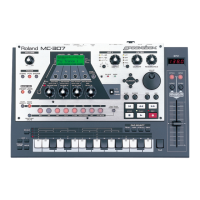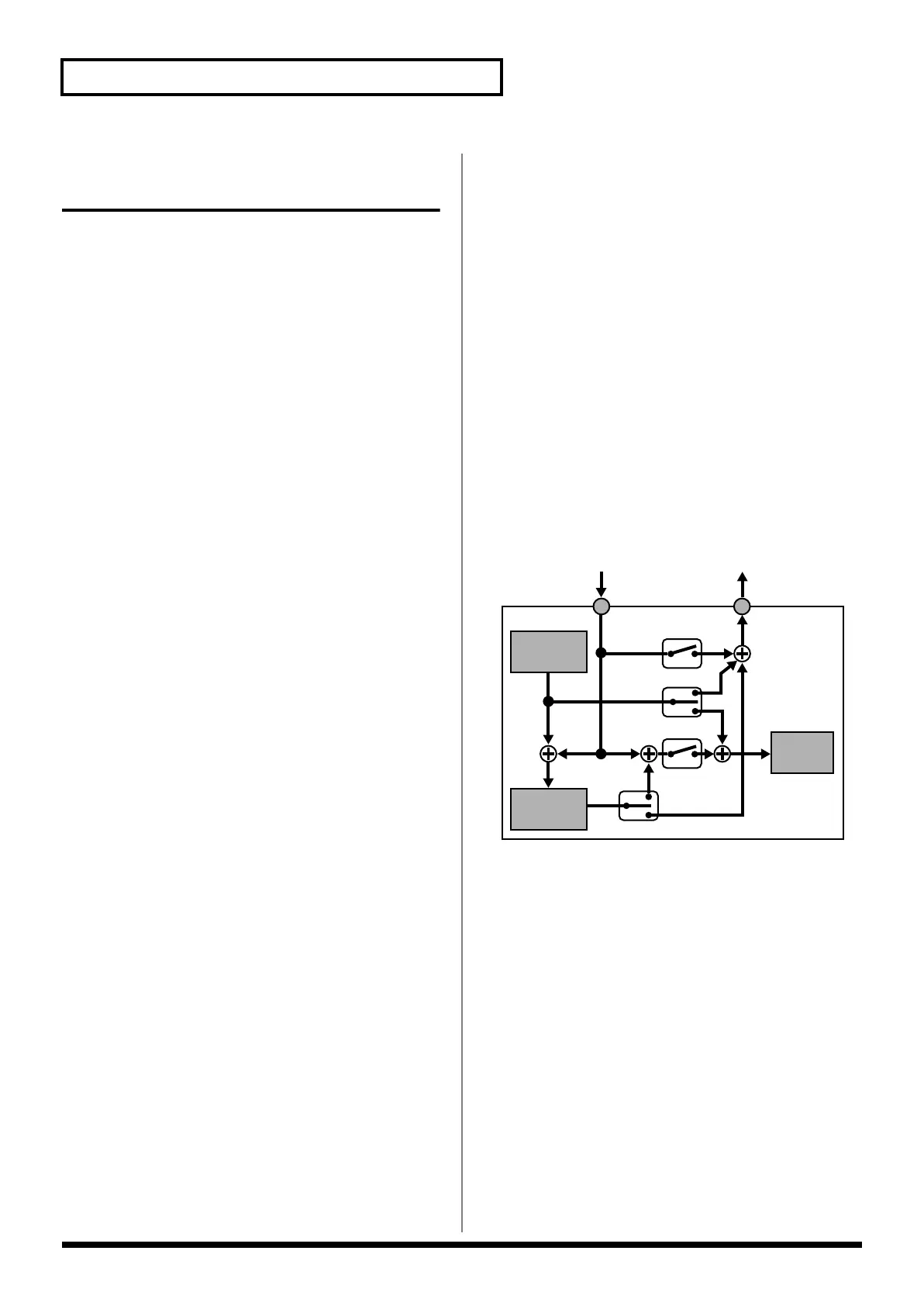132
Chapter 7 Environment Configuration and
Advanced Operation Using
MIDI
About MIDI
The MC-307 records and plays back MIDI musical data, and
when MIDI musical data is received its sound generator will
produce sound.
MIDI (Musical Instrument Digital Interface) is a standard
specification that allows musical data to be exchanged
between electronic musical instruments and computers.
Devices that have a MIDI connector can be connected using a
MIDI cable, allowing them to transmit and receive data.
Today, MIDI is found on virtually all electronic musical
instruments. Without MIDI, it would not be possible to use
an external keyboard to play the MC-307, or to use the MC-
307 to record and play back a performance played on an
external keyboard. Although you can use the MC-307
without knowing much at all about MIDI, you might also
want to take full advantage of the possibilities offered by
electronic musical instruments. This chapter will provide a
simple explanation of the MC-307’s MIDI-related
functionality.
About MIDI connectors
The MC307 has two kinds of MIDI connectors.
- MIDI OUT Connectors
These connectors transmit MIDI messages to external
MIDI devices. These can also be used as connectors from
which data received from the MIDI IN connector are
directly transmitted. (refer to Re-transmitting messages
received at MIDI IN from MIDI OUT (THRU) (p. 123).).
- MIDI IN Connectors
Performance messages from an external MIDI device are
received here. The MC-307 can receive these messages to
play notes or select sounds, etc.
MIDI Channels
MIDI is able to transmit 16 parts of independent musical data
over a single MIDI cable. This is made possible by the
concept of “MIDI channels.” MIDI channels allow messages
intended for a given instrument to be distinguished from
messages intended for another instrument. There are sixteen
MIDI channels (1–16), and normally the transmitting device
must be set to the same MIDI channel as the receiving device
in order for messages to be received.
With the factory settings, the MC-307’s Remote Keyboard
setting is ON. In this condition, an external MIDI keyboard
will be able to play the patch of the current part, regardless of
its transmit channel setting.
-> “Using an External MIDI Keyboard in Place of the
Keyboard Pads (refer to Using an external MIDI
keyboard in place of the keyboard pads (REMOTE
KEYBOARD) (p. 123).)
* The transmit/receive channel settings of each part are as
follows. It is not possible to change the channel settings of each
part.
- Rhythm part: Ch. 10
- Part 1: Ch. 1
- Part 2: Ch. 2
- Part 3: Ch. 3
- Part 4: Ch. 4
- Part 5: Ch. 5
- Part 6: Ch. 6
- Part 7: Ch. 7
The flow of MIDI signals inside the MC-307 is as follows.
If you would like to know more about each parameter...
- refer to Re-transmitting messages received at MIDI IN
from MIDI OUT (THRU) (p. 123).
- refer to Specifying the channel that will control
arpeggios (ARPEGGIO CTRL CH) (p. 124).
- refer to Disconnecting the keyboard pads from the
internal sound generator (LOCAL TX SW) (p. 126).
When MIDI messages are being received from the MIDI IN
connector, the MIDI indicator will light.
Controller
section
Sequencer
section
Sound
soruce
section
Thru
Local Tx Sw
MIDI Rx Sw
Sequencer Output Assign
MIDI In
MIDI Out

